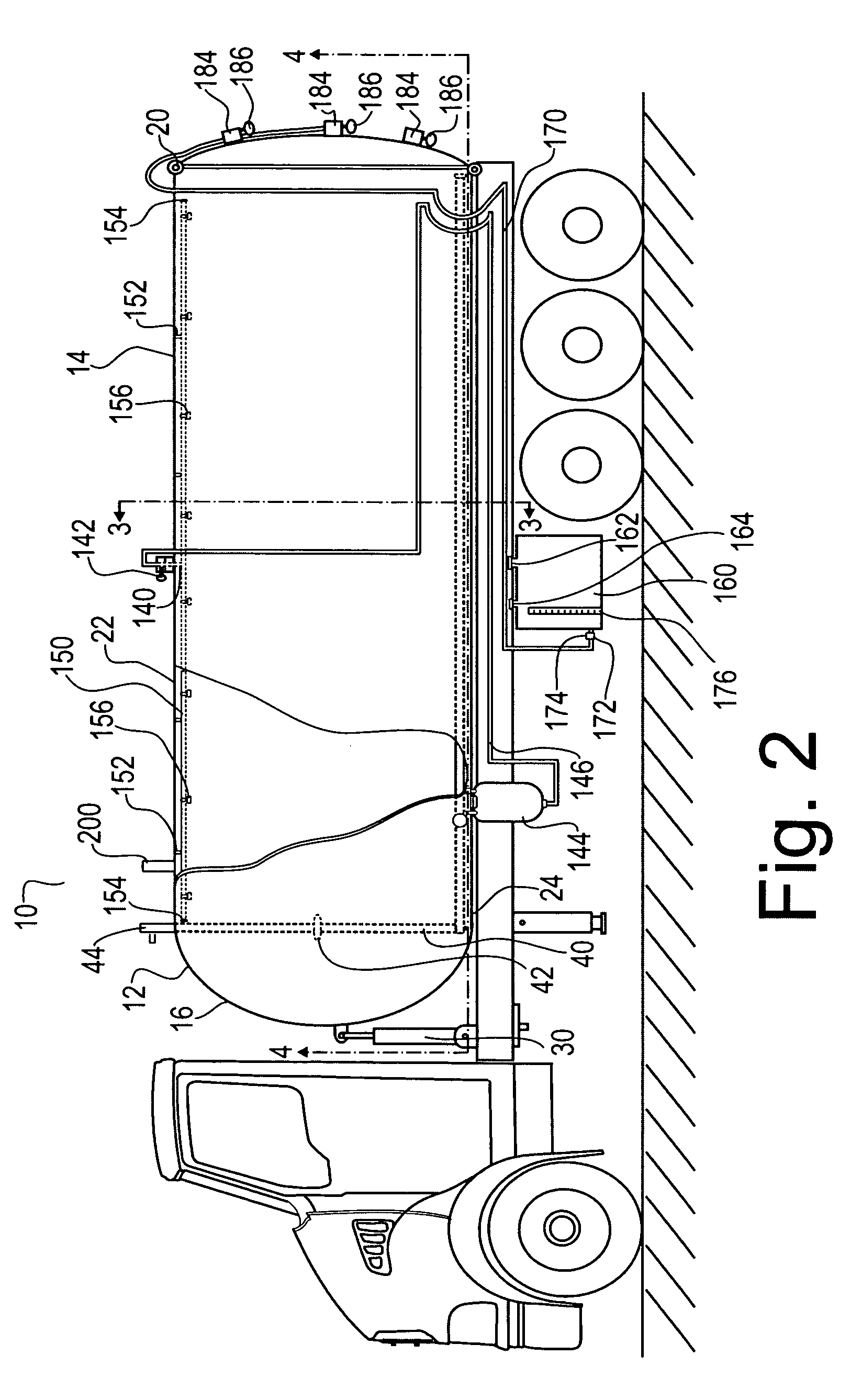Process and apparatus for enhanced recovery of oil from oily particulate material
a technology process, which is applied in the direction of dewatering/demulsification with mechanical means, liquid hydrocarbon mixture production, water/sludge/sewage treatment, etc., can solve the problems of substantial cost associated with the disposal of oily particulate material, significant cost addition, and high process cost. , to achieve the effect of reducing the cost of trucking
- Summary
- Abstract
- Description
- Claims
- Application Information
AI Technical Summary
Benefits of technology
Problems solved by technology
Method used
Image
Examples
examples
[0077]Bench testing has been conducted using four litres of methyl ester per cubic meter of oil slop material on a 12 litre sample oil slop material with 8 litres of water. The oil concentration of the slop material was 35 percent by volume, sand content was 38 percent by volume, clay was present in the amount of 0.5 percent by volume and the remainder of the mixture was water. Agitation was conducted with compressed air at approximately 5 pounds per square inch through 12 one millimeter diameter injection points. The temperature of the sample was 12 degrees Celsius. The mixture was agitated for 10 minutes and the mixture was allowed to settle for 15 minutes after agitation. The resulting emulsion layer had a 50 percent oil concentration by volume, 2 percent sand and fine clay and water in emulsion suspension. The sand layer at the bottom of the tank contained about 1 percent of oil. The method used to determine the oil content of the sand at the bottom of the tank involved use VARS...
PUM
| Property | Measurement | Unit |
|---|---|---|
| pressure | aaaaa | aaaaa |
| pressure | aaaaa | aaaaa |
| temperatures | aaaaa | aaaaa |
Abstract
Description
Claims
Application Information
 Login to View More
Login to View More - R&D
- Intellectual Property
- Life Sciences
- Materials
- Tech Scout
- Unparalleled Data Quality
- Higher Quality Content
- 60% Fewer Hallucinations
Browse by: Latest US Patents, China's latest patents, Technical Efficacy Thesaurus, Application Domain, Technology Topic, Popular Technical Reports.
© 2025 PatSnap. All rights reserved.Legal|Privacy policy|Modern Slavery Act Transparency Statement|Sitemap|About US| Contact US: help@patsnap.com



